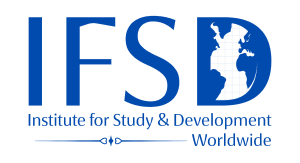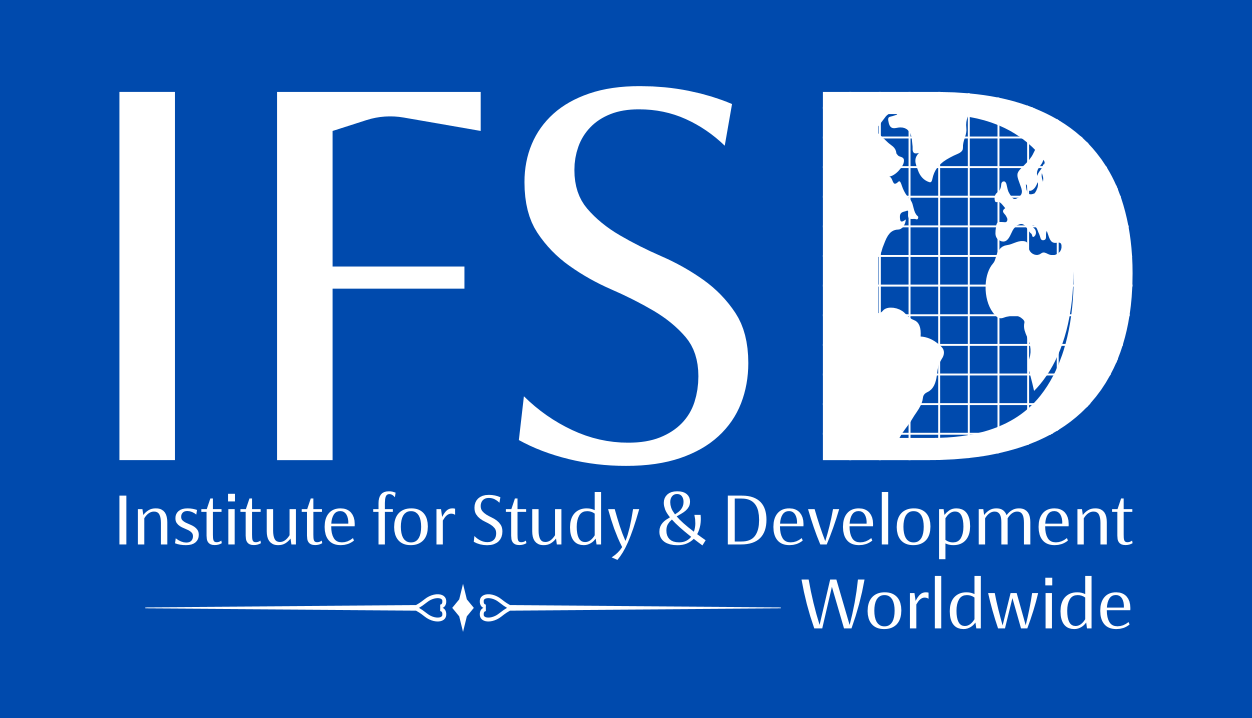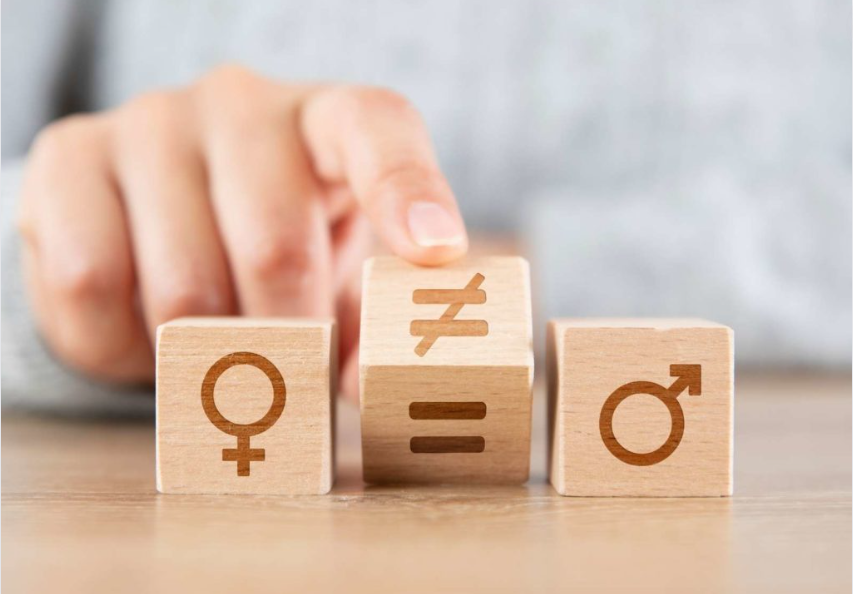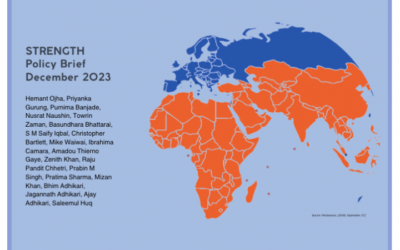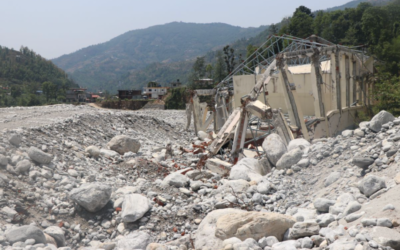Despite significant international development efforts to promote gender equality, achievements remain limited. Dr Basundhara Bhattarai, Senior Gender and Development Specialist at IFSD, presents a critical analysis of the problem and offers some actionable solutions for gender-equitable international development.
Recognising the widespread gender inequality from household to the public domains, concerted efforts to tackle the challenge have been made globally since World War II. Remarkable achievements have been made at both global and national levels. For instance, several international conventionsi have been signed, and many countries have formulated national level gender equality policies. In fact, international policy instruments spotlighted persistent gender injusticeand hence catalysed efforts for change. They also provided national policy makers with fresh analytical lens and policytools.
Important conceptual and practical innovations have also emerged towards reducing gender- based injustice. The firstnotable approach to address gender injustice emerged with the concept of Women in Development (WID) in the 70s,which emphasized women focussed interventions as solutions. This approach helped bring the gender agenda into the fore, but it had a major limitation: it overlooked structural relations between men and women and among women in the family and in the larger society. In recognition of this limitation of the WID approach, Gender and Development (GAD) approach emerged in the 90s. This concept marked an important shift away from women focused interventions, to transforming socio-cultural relations of gender among women, men and women and the larger society.
As a result of new policies and implementation strategies, women’s participation in the decision-making bodies ofcommunity level environmental management has increased. Studies show that in some parts of the world, women now occupy up to 50% of the decision making and executive positions in community development groups, such as thoserelated to community forest, water, and agriculture. South Asia region where gender inequality has been particularly entrenched has seen significant improvements in balancing gender composition in groups managing natural resources, such as community forestry [1]. At higher levels of decision making too, representation of women has increased, such as in the parliament, and at government and non-government organisations ii. In Nepal, for example, 41% women representatives have been elected in local governmentsiii , demonstrating a big advancement of women’s representation in decision making bodies.
Continuing Challenges
The above-mentioned achievements are important, but gender injustice still remains a major challenge in international development (See Figure 1 below). Meaningful impact on gender equity remains limited [2]. Despite major strides inconceptual development and positive shifts in the policy, implementing institutions and the actual social practices in international development are still gender inequitable and hence warrants transformative change. This is shown by an emerging body of independent evaluations of development programs.
I categorize four gender-regressive mindsets that underpin the persistence of gender injustice.
Problematic mindset 1: Increasing physical representation of women leads to gender equality.
Although the number of women in the parliament, the government, sectoral development agencies, and community organisations has increased, the qualitative influence of women in actual decision processes still remains limited. Women have assumed decision making positions, but their agency is not yet nurtured fully so they can participate effectively. Ironically, the evidence of the increased number of women has been used as a tool to legitimise the existing gender injustice, and as a result, ‘participatory exclusion’v persists. Conceptually, the focus still remains on critical mass and numbers following the WID legacy, attention to more important aspects such as critical awareness and theagency for changevi remains limited.
The notion of “30 percent women” as a critical mass [3] to make difference is a myth. My research shows even if women occupy 50 percent of the seats in a decision-making body (for example Nepal’s community forestry and agricultural development groups), the situation of women has essentially remained the same [4]. This point alerts us that there is something else hindering women to make a difference, and this cause is not limited to the lack of their numerical presence in the decision-making bodies. The “number” orientation should not deflect our attention to more fundamental and political dynamics of gender injustice.
Problematic mindset 2: Women are treated independent of the social system
Gender equality interventions often treat women outside of the social systems, and power hierarchies and age-old inequitable relationships are often ignored. In one instance, I found that women were given a training on their legal rights as citizens. The women feel so empowered that they then challenged their husbands to share household workexclusively done by women. Their husbands became furious and physically assaulted their wives. In another case, women were elected as leaders of local governments, but they could not undertake the role as they remained overburdened with household level responsibilities. This indicates that women are getting into the public domain atincreasing cost of their own wellbeing. As women are performing the more of the public roles, previously carried out by men, men do not seem to be prepared to share household tasks that women have been doing. Without considering such wider social relationships of gender, empowering or otherwise supporting women is not enough for positive change.Women focussed interventions may even lead to worse situations.
Problematic mindset 3: Sectoral fragmentation of development interventions ignore gendered social system
Too often, gender equality interventions are not envisaged in the wholeness of the problem. First, scale dimension is missing. International development interventions mostly ‘target’ grassroots women, but there is limited consideration to link processes of change across different levels: individual, family, community, subnational and national, and the regional levels. Gender discriminatory practices originates in the wider society and not in a specific sector of development [1], unlike the belief of many development agencies.
Development agencies enter the domain of gender injustice problem from various sectors and technical areas such asforestry, agriculture, water, and health. In doing this, these agencies fail to recognise system-wide roots of genderinjustice. They think that gender inequality challenge is produced entirely within the sectors of their interest and priority. It is of course not possible for one agency to look at the entire social system, but there are at least a few critical domains that cannot be overlooked. For instance, works on agriculture and women empowerment cannot ignore women’s access to land and financing related to agricultural development.
Problematic mindset 4. Gender transformative change happens through specific intervention projects
Gender injustice issue has been the subject of a development project and not as frequently a matter of public debate as it should have been. Moreover, there is no institutional compulsion or personal motivation to go beyond the (comfort zone) standard practice to explore the roots of the gender injustice problem and possible solutions. Despite good intentions, development projects pull apart (break) the complex gender inequality problem into a specific, measurable and workable parts, often ignoring the complex, underlying and the systemic aspects. In the recent years, gender agenda has even become cosmetised, as development agencies and NGOs use gender equalitylanguages to comply with various gender and development frameworks of the government and donors. There is lack of genuine committeemen to gender transformative change. As a result, in every project intervention, gender equality agenda starts with the initial provisioning of some seats for women as project beneficiary and this concept is recycled in every new project[5]. Clearly, framing a theory of gender change around numbers of participating women and withinthe framework of ‘specific, measurable, attainable, time-bound (SMART)’ objectives of gender projects do not do justiceto the complex political and cultural dynamics that underpin gender injustice.
Actionable Opportunities for Transforming Gender Relations
Considering the above-mentioned mindsets underpinning gender injustice, I propose five actionable solutions which are outlined below.
Focus on women’s economic empowerment
Access to economic assets can have transformative effects on gender equality. Take for example the discriminatory wage rate that has remained for generations in the developing world. Similarly, enhancing women’s ownership over land can have significant impact on gender relations and livelihoods in rural societies. Change agents can work with local governments to establish fair wage systems. Likewise, another opportunity is to provide assistance through which women can develop their entrepreneurial capacity. Entrepreneurship can create an opportunity for people to controlresources as well as ideas so that they can move from one situation to another. In the digital age, opportunities are immense even in the developing world where there has been a dramatic increase in internet access and cross border marketing of goods and services. While facilitating economic empowerment, we should not only focus on creating numbers of successful cases, but also pay attention to raising critical awareness on gender in/equality among the key male and female gender champions [6]. When women have better access to financial resources and when they are better aware of the acute gender related disparities in the society, opportunities for more gender transformative change couldunfold.
Develop male champions for gender justice
Gender equality cannot be achieved simply by targeting women, in isolation of men and boys. Developing a critical mass of men and boys as champions of gender justice is equally important. A recent report by International Labour Organization (ILO) suggests three major areas and six strategies to involve men and boys in women’s enterprisedevelopment processes [7]. Taken together fostering critical awareness among men and boys is crucial for achieving gender equality. When men recognize gender injustice as a problem to be tackled, alongside the mass of critically awarewomen, chances are higher to hit the relational and structural roots of the gender injustice problem.
Enhance the capacity of change agents and frontline facilitators
In my 15 years of experience in international development, too frequently I have seen development service providers in the government and the NGOs actually reinforcing gender imbalance despite good intentions to change. In their genderand development works, they talk about gender equality but in practice contribute to inequality. Take, for example, the way public meetings are typically held in South Asia: women take the role of ‘master of ceremony’ and are charged with greeting the male guests withgarlands. Even meetings with the good intention of changing gender relations follow such gender stereotypes. Gender activists can learn and design interventions to demonstrate change in established gender roles. Serious and more conscientious efforts on the part of change agents and facilitators will make a huge difference. There is thus an urgent need to reorient service providers and strengthen their capacity to recognise the problem of gender injustice inside the social system. While transformative change cannot be driven by external facilitators alone, they can do a lot more if they are better equipped to understand and address the transformational aspects of gender relations.
Create institutional instruments
It is increasingly common to find some good policies at national level aiming to achieve gender justice. In order to translate good policies into implementation, adequate procedures and operational guidelines need to be developed. Lack of procedures and guidelines has been one of the major policy lacunas in gender equality interventions. Moreover, gender equality interventions are rarely linked to the whole program cycle, beyond a specific activity, such as training. Every intervention has to start from designing stage and then move on to implementing to progress monitoring andprogram evaluation stage. There should also be space for program teams to engage with the wider processes beyond the purview of a specific program. Too often projects are implemented as one off and as isolated efforts, and lessons are rarely learned, not even documented and considered in the next cycle of the project. Because of the lack of institutional commitment to learn and improve, same sets of activities and strategies are adopted every time when the project begins, with limited change in approach or practice. By creating policy and institutional arrangements to facilitate the development of actionable methods and guidelines as well as incentivise learning from practice, more gender equitable outcomes can be achieved. Senior management of development organisations can introduce a number of specific measures to catalyse gender transformative behaviours in practice.
Support action-oriented research to build up critical evidence for transformation
Merely talking about transformation does not lead to transformation – we need to demonstrate ways to do that through action research in specific socio-economic contexts.
Transforming gender equality is a highly political process and it involves undoing the mindsets that have developedthrough long and historical processes of cultural formation. In this context, research and learning processes are critical components of the wider process of gender transformative change, as critical evidence and feedback may not emerge in the everyday attempts to change. I emphasize action research to move beyond the disengaged, academic research. And Iacknowledge action research has a long tradition and it has also failed to deliver on many occasions, but like democracy, we cannot throw it away: if one form of democracy fails, we need to explore just another form of democracy, and but not replace democracy by autocracy. We need to work out action research that delivers critical evidence for transformative change.
Efforts should also be made to link research with the work of the champions of gender transformative change. It is important that gender justice researchers move closer to the systems of policy making and arenas of practical discoursein order to create better impact [8]. Programs and policies, if they acknowledge the potential of gender transformativechange, can more seriously support action research and efforts to demonstrate alternative and gender transformative practices and behaviours.
Please click here for downloading the paper.
